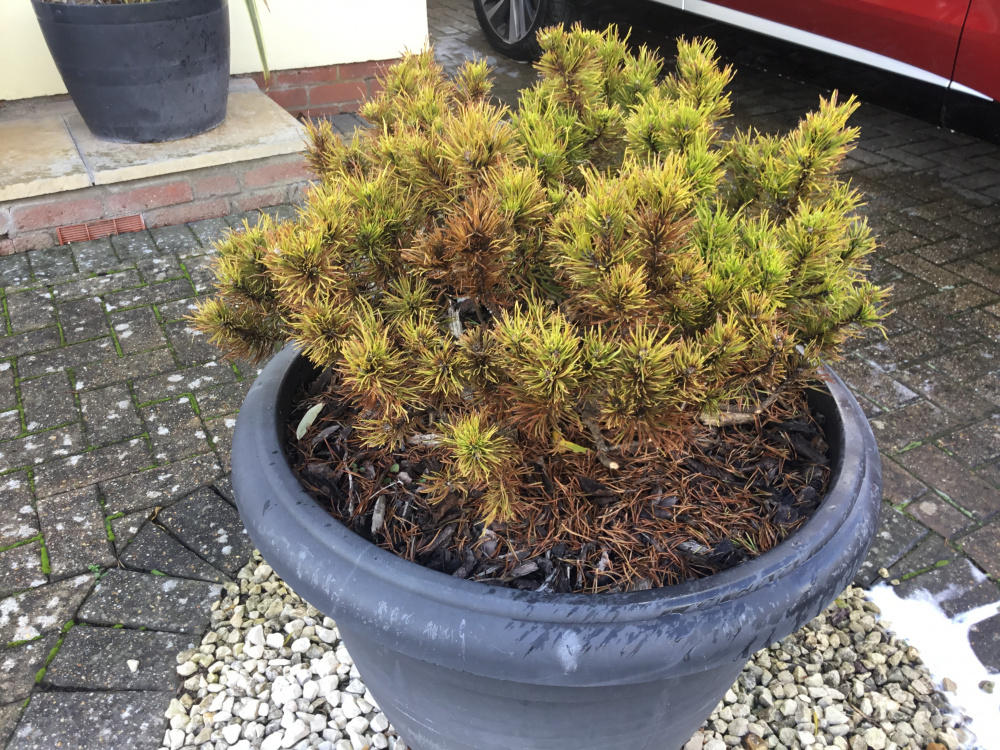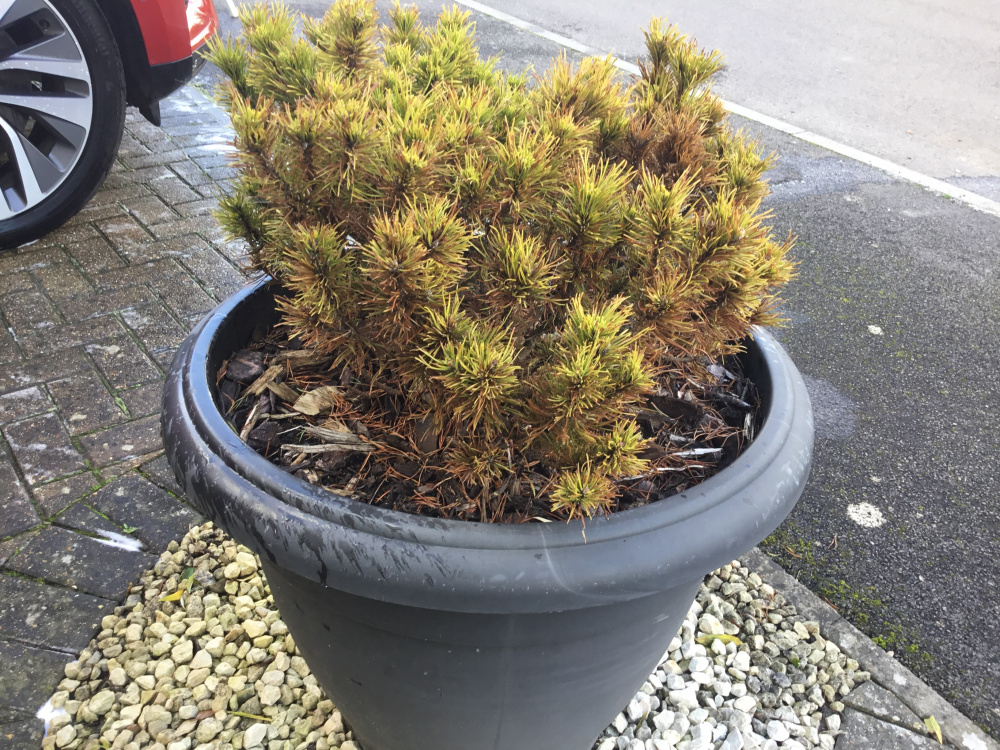This Forum will close on Wednesday 27 March, 2024. Please refer to the announcement on the Discussions page for further detail.
Pinus mugo Winter Gold browning and dropping needles
Hello there, I’ve had my beautiful Pinus mugo in a large pot in good quality MPC in an east facing position for over a year and it was very happy and thriving. However, in the last couple of months, as shown in the photos, the underneath needles have quickly turned brown and are dropping but the ends still seem healthy and contain new growth (it’s currently changing its green summer coat for its yellow winter one!) I can’t see any sign of blight etc but wonder if it is in terminal decline, whether I should be trimming out the discoloured stems or it will recover?
Many thanks.



0
Posts
You need a soil based compost, or your ordinary garden soil if it isn't too alkaline. They need lots of moisture but also good drainage.
They will drop needles anyway, but should be otherwise green if they're healthy.
You'll struggle to keep it potted long term though, unless you root prune etc.
I live in west central Scotland - not where that photo is...
Conifers will die, but due to their thick needles there's no sign of death until some months later when the needles start to go brown then drop.
I had one many years ago planted in the garden. They remain very small for a long time, so with a decent size pot and good compost it should be happy in a pot for many years.
Billericay - Essex
Knowledge is knowing that a tomato is a fruit.
Wisdom is not putting it in a fruit salad.
If it is still alive, then by that time new growth should be obvious.
But I wouldn't get your hopes up too much.
If you replace it use a soil-based compost - John Innes is what you're looking for.
They do produce an ericaceous version, but it's not widely available.
If JI Ericaceous isn't available, then use John Innes No.2 or 3 (2 ideally as it has less fertilizer).
Whichever soil-based compost you choose, mix in a good 20% of grit for drainage and around 20% ordinary ericaceous compost (any brand) added in will lighten the mix and provide good drainage.
It's important to ensure free drainage especially over winter, so pot feet (or something similar) are important. Yous is on some pebbles, so in that location feet aren't needed.
Billericay - Essex
Knowledge is knowing that a tomato is a fruit.
Wisdom is not putting it in a fruit salad.
As @Pete.8 says, it's often too late when you start seeing the signs of a failure to thrive, and the most common reason is drought, but if you can get it in soil, you might be in time. You can buy loam based products at GCs -look for a John Innes one. There are various types but it'll tell you on the packaging. J. Innes is just a formula. Unfortunately, it isn't always made clear that shrubs or trees in pots need a bit more than compost, so don't worry - it's a very common problem. I'm quite sure I had no idea about that when I started gardening
When you repot, just make sure the rootball is thoroughly moist
I live in west central Scotland - not where that photo is...
MPC may not be the best longterm, but won't have had time to affect your plant's present condition. Which, by the way, is far from terminal.
"Have nothing in your garden that you don't know to be useful, or believe to be beautiful."
A tapering pot like that also has less volume, so if you feel like forking out for a square or straight sided pot, that can help. Avoid terracotta, unless you give it a coat of PVA or varnish, because they're very porous so you lose a lot of moisture to the pot too. I have some round, straight sided pots [treated terracotta] which I use for my sweet peas, as they need lots of moisture and that's also good for stability if it's windy
It certainly won't have helped if it was short of moisture for a while, but fingers crossed you can revive it
I live in west central Scotland - not where that photo is...